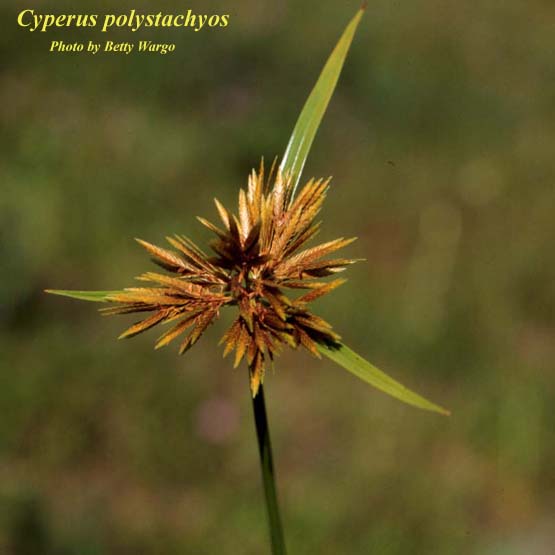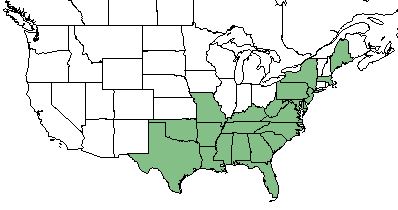Difference between revisions of "Cyperus polystachyos"
(→Ecology) |
|||
| Line 1: | Line 1: | ||
{{italic title}} | {{italic title}} | ||
| + | Common name: manyspike flatsedge <ref name= "USDA Plant Database"/>, coast flatsedge <ref name= "Weakley 2015"/> | ||
<!-- Get the taxonomy information from the NRCS Plants database --> | <!-- Get the taxonomy information from the NRCS Plants database --> | ||
{{taxobox | {{taxobox | ||
Revision as of 12:40, 7 June 2018
Common name: manyspike flatsedge [1], coast flatsedge [2]
| Cyperus polystachyos | |
|---|---|

| |
| Photo by the Atlas of Florida Plants Database | |
| Scientific classification | |
| Kingdom: | Plantae |
| Division: | Magnoliophyta - Flowering plants |
| Class: | Liliopsida - Moncots |
| Order: | Cyperales |
| Family: | Cyperaceae |
| Genus: | Cyperus |
| Species: | C. polystachyos |
| Binomial name | |
| Cyperus polystachyos Rottb. | |

| |
| Natural range of Cyperus polystachyos from USDA NRCS Plants Database. | |
Contents
Taxonomic Notes
Synonyms: C. polystachyos Rottbøll var. texensis (Torrey) Fernald; C. polystachyos var. paniculatus (Rottbøll) C.B. Clarke; C. microdontus Torrey; C. paniculatus Rottbøll
Varieties: Cyperus prolifer Lamarck
Description
C. polystachyos is an annual/perennial graminoid of the Cyperaceae family native to North America, Hawaii, Puerto Rico, and the U.S. Virgin Islands, and both native and introduced to the Pacific Belt. [1]
Distribution
C. polystachyos can be found along the southeastern coast from Texas to Maine, Hawaii, the Pacific Belt, Puerto Rico, and the U.S. Virgin Islands. [1]
Ecology
Habitat
C. polystachyos proliferates in low fields, ditches and marshes, as well as pantropical and warm temperate environments. [2]
Phenology
C. polystachyos flowers June-September. [3]
Fire ecology
C. polystachyos is not fire resistant, and has no fire tolerance. [1]
Conservation and Management
C. polystachyos is listed as endangered by the New Jersey Department of Environmental Protection and Energy Office of Natural Lands Management, and as extirpated by the Pennsylvania Department of Conservation and Natural Resources. [1]
Cultivation and restoration
Photo Gallery
References and notes
- ↑ 1.0 1.1 1.2 1.3 1.4 USDA Plant Database https://plants.usda.gov/core/profile?symbol=CYPO
- ↑ 2.0 2.1 Weakley, A. S. (2015). Flora of the Southern and Mid-Atlantic States. Chapel Hill, NC, University of North Carolina Herbarium.
- ↑ PanFlora Author: Gil Nelson URL: http://www.gilnelson.com/PanFlora/ Date Accessed: 5/18/18